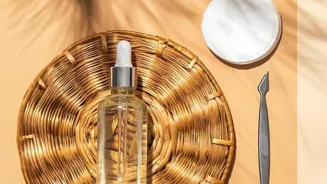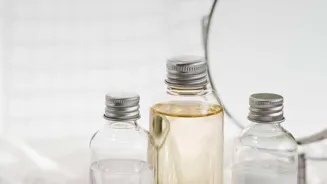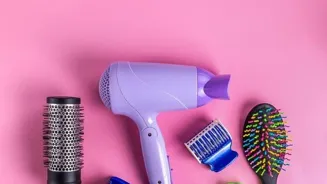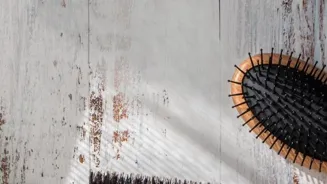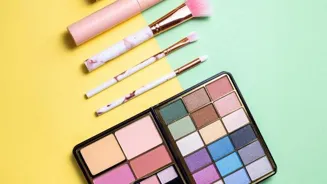Unlock Your Hair's Potential: Choose the Perfect Hairbrush for Your Hair Type. Read on to say goodbye to bad hair days!
In the colourful world of beauty and personal grooming, one often overlooked hero
is the humble hairbrush. We use it every day, often without much thought, but the truth is, the right hairbrush can make a world of difference to your hair's health, shine, and manageability.

Using the wrong one, on the other hand, can lead to breakage, frizz, and even scalp damage. So, how do you navigate the seemingly endless options and choose the perfect hairbrush for your unique hair type and needs?
Fear not, we're here to guide you through the maze and help you unlock your hair's full potential.
Understanding your hair type is crucial for healthy hair
Understanding your hair type is the first and foremost step in making an informed decision. Is your hair straight, wavy, curly, or coily? Is it fine, medium, or thick? Is it prone to dryness, oiliness, or breakage? Asking yourself these questions will narrow down your options considerably.

For instance, someone with fine, straight hair will have very different needs than someone with thick, curly hair. Colour-treated hair also requires special considerations to prevent damage and maintain vibrancy.
Once you have a clear understanding of your hair's characteristics, you can start exploring the various brush types available. Remember, selecting the right brush is an investment in your hair's long-term health and beauty, sparing you from split ends and frustrating styling sessions.
So, let's begin this journey together and ensure you have hair that turns heads for all the right reasons.
Choosing the right bristle type for your hairbrush is crucial for healthy hair
Bristle type is another crucial factor to consider. The market offers a wide variety, with the most common being natural boar bristles, synthetic bristles, and mixed bristles.

Natural boar bristles are fantastic for distributing natural oils from the scalp down the hair shaft, resulting in shinier, healthier-looking hair. They're particularly beneficial for fine to medium hair that's not overly thick. However, they can be a bit harsh on very thick or coarse hair.
Synthetic bristles, usually made of nylon, are more durable and better suited for detangling thick or coarse hair. They're also a good option for those who are vegan or allergic to animal products.
Mixed bristle brushes offer the best of both worlds, combining the oil-distributing benefits of boar bristles with the detangling power of synthetic bristles. These are a versatile option suitable for most hair types.
Remember, the right bristle type can minimize breakage and promote healthy hair growth, so choose wisely.
Brush shape and size dictate styling; choose right type for desired results
Beyond bristle type, the brush shape and size also play a significant role. Paddle brushes, with their large, flat surface, are excellent for detangling and smoothing long hair. They're also great for creating sleek, straight styles when used with a hairdryer.

Round brushes, on the other hand, are ideal for adding volume and creating curls or waves. The size of the round brush will determine the size of the curl or wave – smaller brushes for tight curls, larger brushes for loose waves.
Vented brushes are designed to allow airflow during blow-drying, which helps to speed up the drying process and prevent heat damage. Detangling brushes, often with flexible bristles arranged in rows, are specifically designed to gently remove knots and tangles without pulling or breaking the hair.
Choosing the right shape and size can make styling easier and more effective, giving you the desired results without causing damage. Consider your typical styling routine and the looks you want to achieve when making your selection.
Choose bristle spacing based on hair type for optimal styling
The spacing of the bristles is yet another important element to consider. Densely packed bristles are ideal for smoothing and polishing the hair, creating a sleek, frizz-free finish. They're particularly well-suited for fine to medium hair that's prone to flyaways.
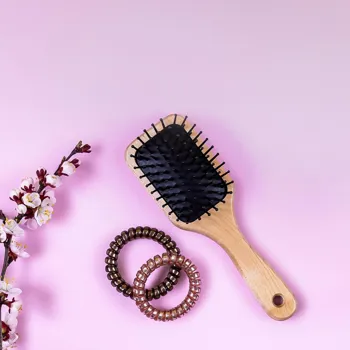
Widely spaced bristles, on the other hand, are better for detangling thick or curly hair, as they allow the brush to glide through the hair without snagging or pulling.
The spacing also affects the amount of tension applied to the hair – closely spaced bristles provide more tension, which can be helpful for smoothing but potentially damaging to fragile hair. Evaluate your hair's density and texture to determine the optimal bristle spacing for your needs.
Remember, the goal is to find a brush that effectively styles your hair without causing undue stress or breakage.
Proper brush maintenance is crucial for healthy hair
Finally, don't forget about the importance of proper brush maintenance. Regularly cleaning your hairbrush is essential to prevent the build-up of dirt, oil, and product residue, which can weigh down your hair and transfer back onto your scalp.
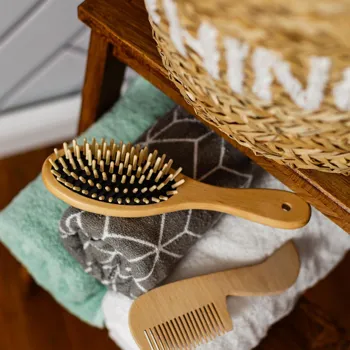
Remove loose hair after each use, and wash your brush every few weeks with a mild shampoo and warm water. Allow it to air dry completely before using it again. Replacing your hairbrush every six to twelve months is also recommended, as the bristles can become worn down and less effective over time.
Investing in a good quality brush and taking proper care of it will not only improve your hair's health and appearance but also extend the life of your brush.
AI Generated Content. Glance/InMobi shall have no liability for the content